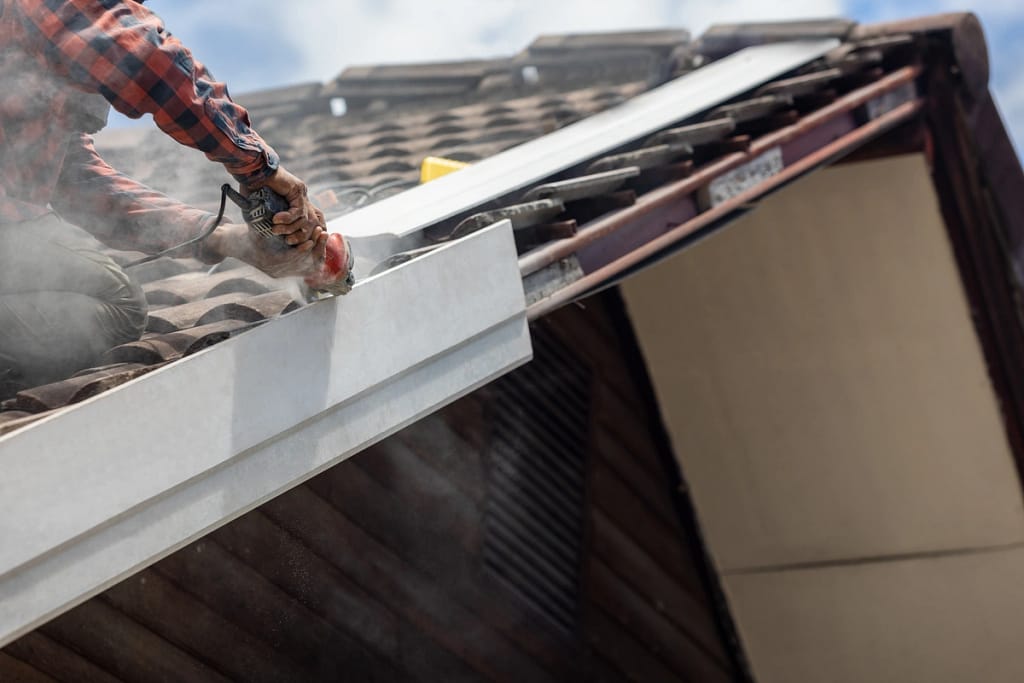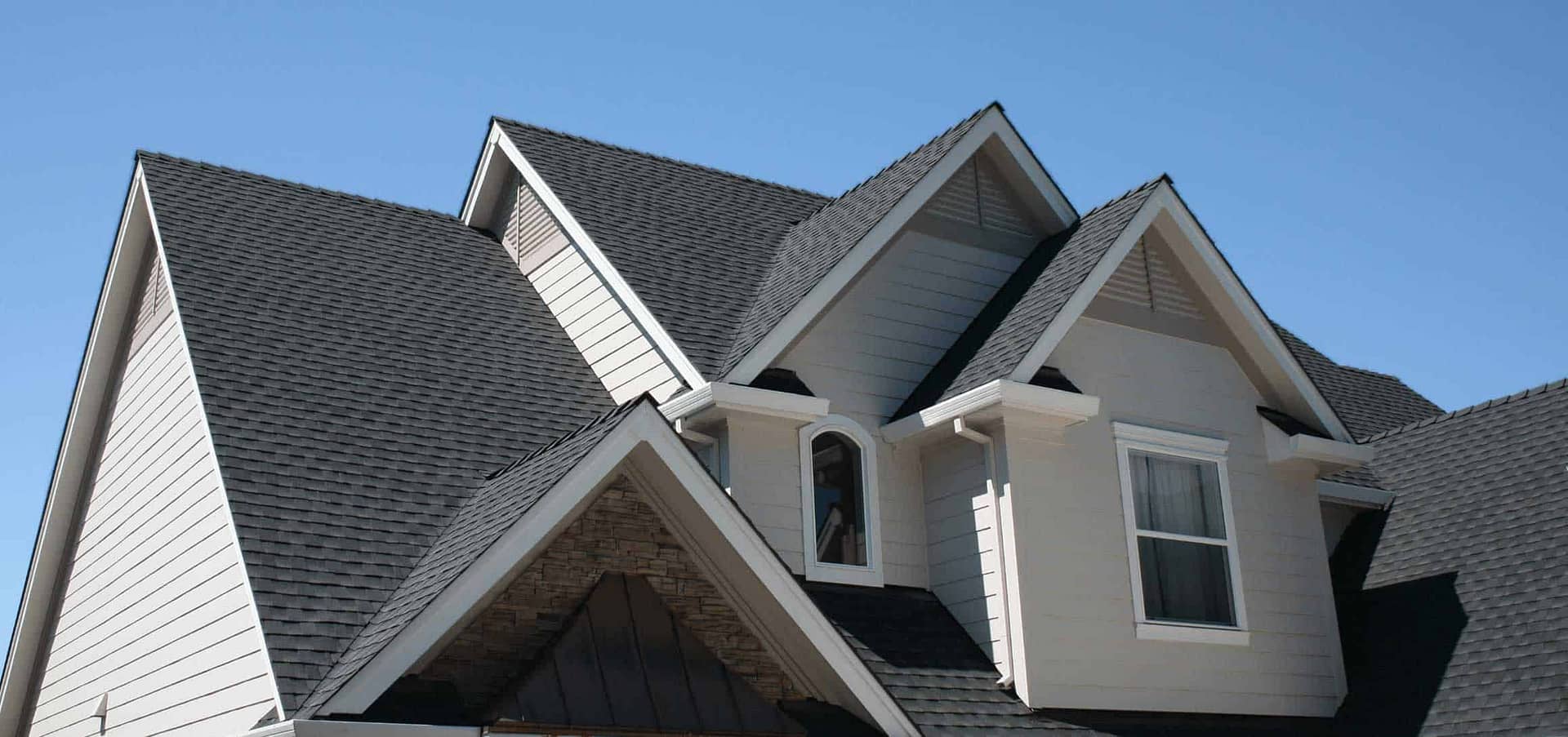Everything to Know About the Eaves of a House
When it comes to your home, it’s essential to understand every part of it, including the often-overlooked eaves. The eaves of your house play a crucial role in protecting your home from the elements and maintaining its structural integrity. In this homeowner’s guide, we’ll dive deep into everything you need to know about the eaves of a house. From their purpose to maintenance tips, we’ve got you covered!
Inside this blog:
- A brief overview of what eaves are
- The 4 key types of eaves
- Eaves maintenance & care tips for homeowners
Keep reading to learn everything you need to know about the eaves of your house!
What Are Eaves, Anyway? 🏠

Eaves are the projecting edges of a roof that overhang the exterior walls of a house. They create an essential transition between the roof and the walls, providing several practical functions:
Rainwater Management
Eaves help redirect rainwater away from the exterior walls and foundation, preventing water damage and erosion. Proper rainwater management also contributes to maintaining the landscaping around your home and prevents soil erosion, preserving the overall aesthetics of your property.
Sun and Weather Protection
They provide shade and shelter from direct sunlight, reducing heat gain in your home and protecting it from harsh weather conditions. This not only enhances your comfort indoors but also helps preserve the lifespan of your exterior paint and finishes, saving you maintenance costs in the long run.
Aesthetic Appeal
Eaves can enhance the visual appeal of your home by adding architectural interest and character to the exterior. These architectural elements provide opportunities for decorative detailing and can complement the overall design theme of your house, giving it a unique and charming appearance that stands out in the neighborhood.
Now that you know what eaves are, let’s explore some key aspects of this essential feature.
4 Types of Eaves
Eaves can take various forms, depending on architectural styles and functional requirements. Here are 4 common types of eaves:
1. Open Eaves
These eaves have no soffit (the underside of the eave). Rafters are exposed, providing a rustic or industrial look. Open eaves are popular among homeowners who appreciate the charm of exposed rafters and desire a unique, unobstructed view of the roof structure.
2. Enclosed Eaves
Enclosed eaves have soffits that cover the rafters, creating a clean, finished appearance. This design choice is ideal for homeowners seeking a polished and traditional look, as the soffits conceal the structural elements, providing a smooth and cohesive appearance.
3. Boxed Eaves
Boxed eaves feature soffits enclosed by vertical and horizontal elements, giving them a boxed-in appearance. This design is often seen in contemporary homes and provides a distinctive modern aesthetic, adding a touch of architectural interest to the exterior.
4. Wide Eaves
Wide eaves have an extended overhang, offering more shade and protection. They are common in areas with intense sunlight or heavy rainfall. Wide eaves not only provide enhanced sun protection but also create opportunities for outdoor living spaces like covered porches or patios, adding functionality and style to your home.
Maintenance and Care Tips for Eaves 🛠️

Eaves require regular maintenance to ensure they continue to perform their protective functions effectively. Here are some maintenance and care tips for your eaves:
- Clean Gutters and Downspouts: Keep gutters and downspouts clear of debris to allow proper drainage and prevent water buildup.
- Inspect for Damage: Periodically check the eaves for signs of damage, such as rot, pests, or loose components. Address any issues promptly.
- Repaint as Needed: If your eaves are painted, consider repainting them when the paint begins to fade or peel. Fresh paint not only looks good but also provides additional protection.
- Replace Damaged Soffits: If the soffits are damaged or rotted, replace them to maintain the integrity of your eaves on your roof space.
- Trim Overhanging Branches: Trim tree branches that hang over your eaves to prevent damage from falling branches or leaves.
Common Eave Problems and Solutions
House eaves can face various problems over time. Here are some common issues and their solutions:
Rot
Eaves are susceptible to rot, especially if they are made of wood. Replace rotted sections promptly and consider using rot-resistant materials for repairs.
Pest Infestations
Insects and rodents can find their way into eaves. Seal any openings and use pest control measures to deter infestations.
Water Damage
Water damage can occur due to leaks, clogs in gutters, or improper drainage. Ensure that water is directed away from your home’s foundation to prevent structural issues.
Soffit Damage
Soffits may deteriorate over time. Replace damaged soffits to maintain the appearance and functionality of your eaves.
Paint Peeling
Peeling paint can expose the wood to the elements. Scrape off loose paint and repaint the eaves to protect them.
Benefits of Well-Maintained Eaves ✅
Properly maintained roof eaves offer several benefits for your home:
- Water Damage Prevention: Eaves effectively redirect rainwater away from your home’s foundation, preventing water damage and costly repairs.
- Energy Efficiency: Eaves provide shade and reduce heat gain in your home, contributing to lower energy bills by reducing the need for excessive cooling.
- Curb Appeal: Well-maintained eaves enhance your home’s aesthetic appeal and add character to its exterior.
- Structural Integrity: Eaves play a vital role in preserving the structural integrity of your home by protecting it from weather-related damage.
- Longevity: Regular maintenance ensures that your eaves last longer and continue to perform their functions effectively.
Fun Fact: The Origin of “Eavesdrop” 👂
The term “eavesdrop” has an interesting origin related to the eaves of a house. In medieval times, the area near the eaves of a house was the place where rain water dripped from the roof to the ground. People standing near the eaves could listen to conversations happening inside the house without being seen. This practice of eavesdropping eventually gave rise to the term we use today.
An Empowered Homeowner Understands the Eaves of Their Home 🏡
Eaves may not be the most glamorous part of your home, but they are undeniably important. Understanding their purpose, types, and maintenance requirements can help you protect your home from the elements and preserve its structural integrity. So, the next time you look up at your eaves, you’ll have a newfound appreciation for these unassuming yet vital features of your home.
Contact Arch Exteriors today to get in touch with our expert team of contractors. With our top tier craftsmanship and dedicated customer service, we guarantee you’ll be thrilled with the final product. Let’s get started on your next home improvement project today!



